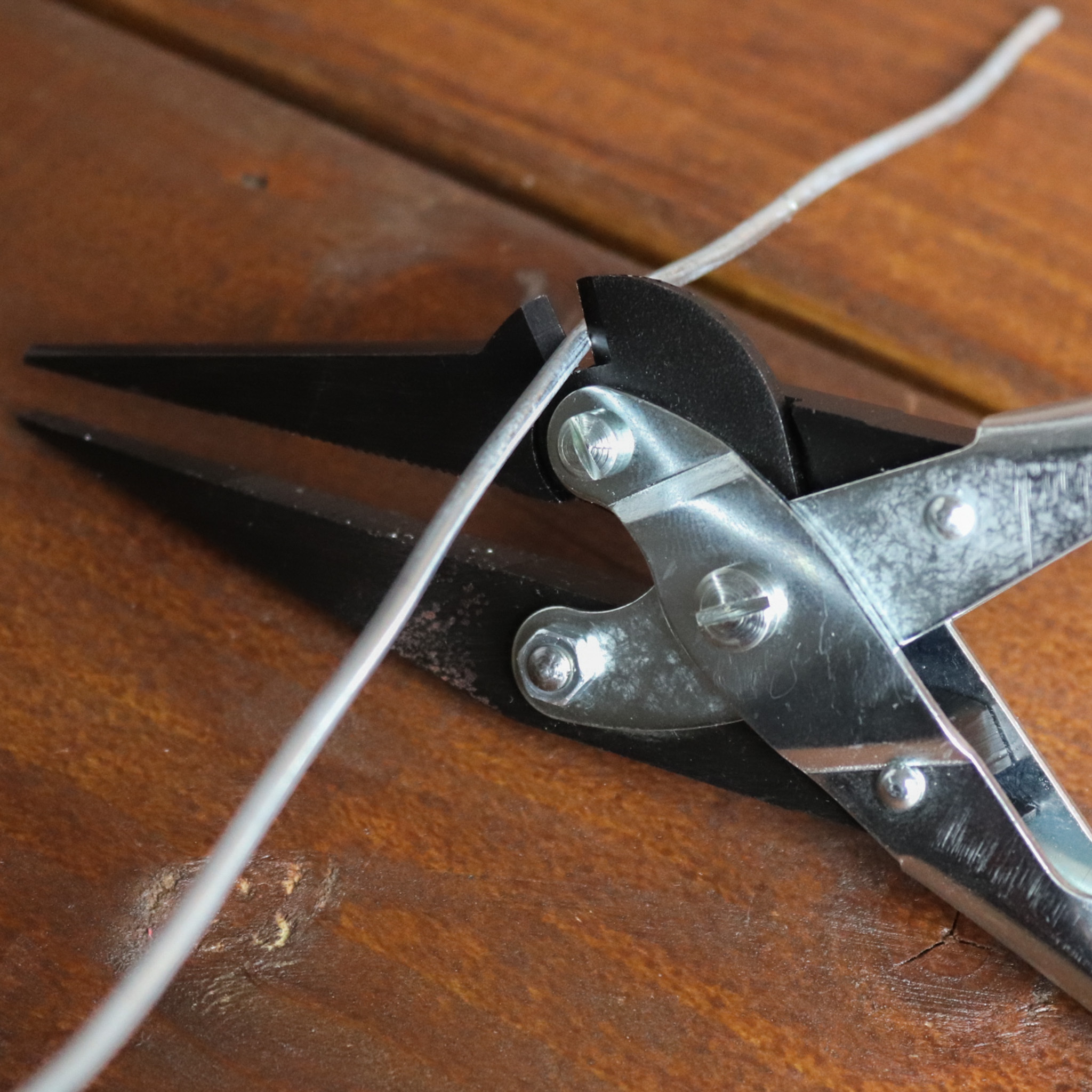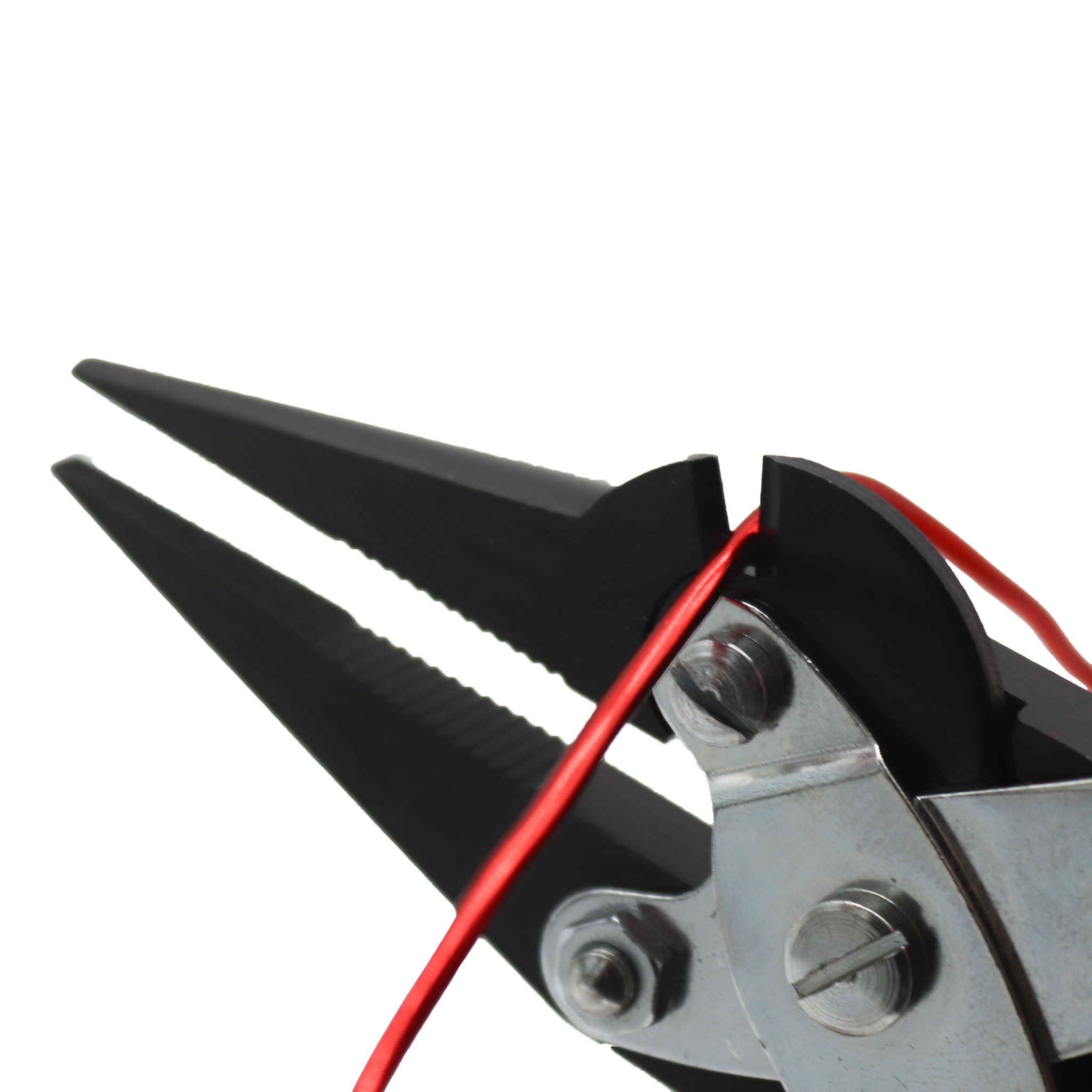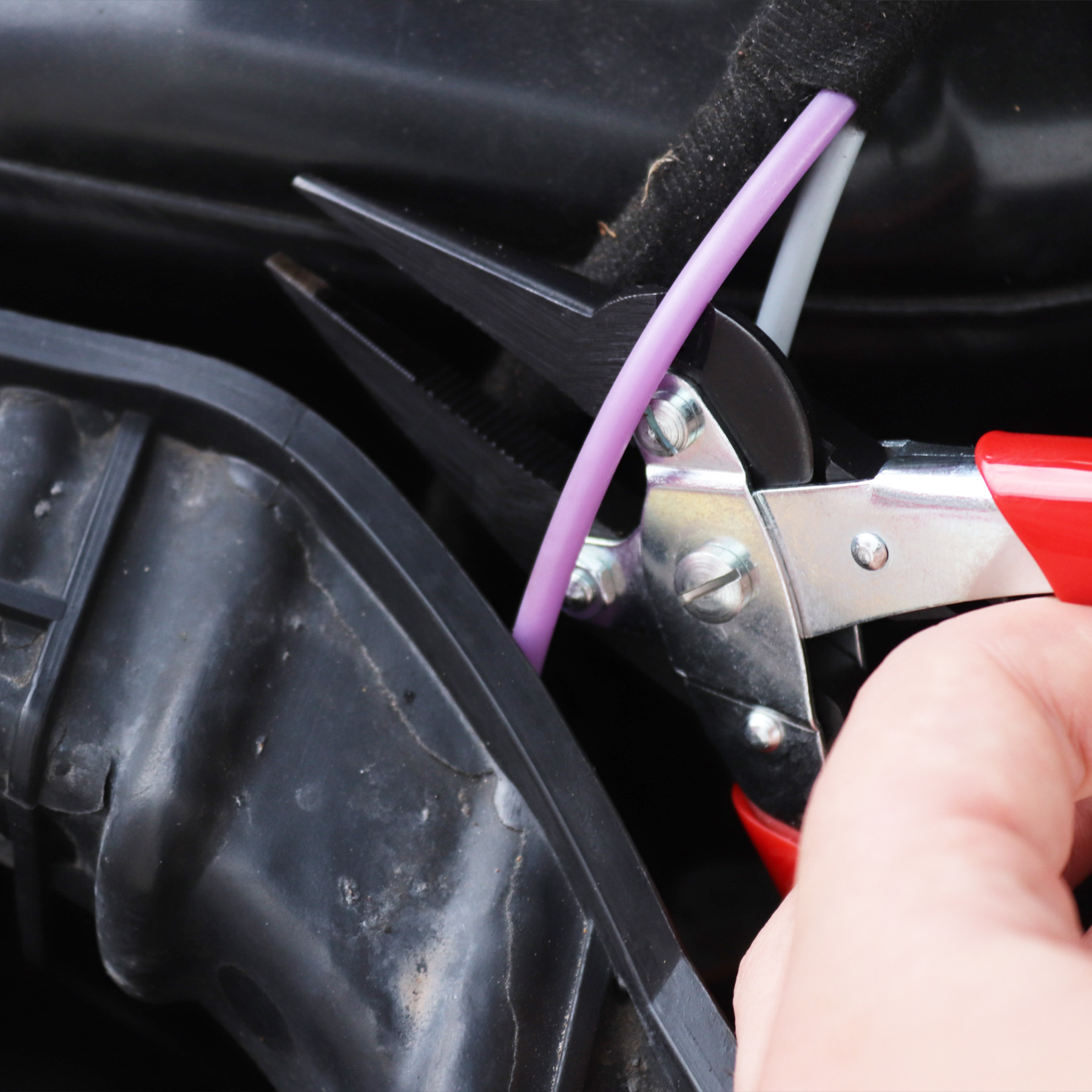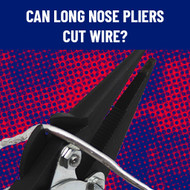Can Long Nose Pliers Cut Wire?
15th Oct 2025
Yes, long nose pliers can cut through wire if they have cutting blades built into the mechanism.
Maun long nose side cutter parallel pliers have a cutting edge on the side of the plier, giving the main jaws a larger contact point for better grip.
Learn more about how to cut wire with long nose pliers below:
Can Long Nose Pliers Cut Through Hard Wire?

Different pliers have different cutting capabilities, so whether they can cut through hard wire depends on the specifications of the plier.
If you try to cut through hard wire with pliers that aren’t designed for it, you’ll likely dull or damage the cutting edges, making the pliers useless.
Luckily, Maun long nose side cutter parallel pliers are designed to cut through hard wire, including tough piano wire up to 2.0mm in diameter.
- They can do this because they use a compound-lever action that multiplies the users hand force by up to 23x, which increases your cutting strength and reduces your hand fatigue while working.
- They also have Jaws and blades case hardened to HRC 57 for durability.
- When cutting heavy duty wire, you want pliers with a larger “land” width (the actual width of the cutting edge), which are not as sharp, but provide much more leverage against a single piece of metal wire.
Browse all long nose pliers here.
How To Cut Wire with Long Nose Pliers

Long nose pliers are best for reaching into hard-to-reach areas. Here’s how to use them for cutting wire:
- Clear Your Workspace – Remove any obstacles to reaching your wire, and make sure there’s nothing that could fall into the way during cutting.
- Wear Safety Gear - Put on safety goggles and gloves to protect against flying wire ends.
- Grip the Pliers Firmly - Hold the long nose pliers in your dominant hand for better control.
- Position the Wire Correctly - Align the wire at a 90-degree angle to the cutting jaws. If space is limited, adjust your grip for better leverage.
- Apply Pressure to Cut - Squeeze the handles firmly until the wire is cut. In tight spaces, you may need to use both hands for extra force.
- Release the Pliers Carefully - Once the wire is cut, slowly release your grip to maintain control and avoid sudden movements.
What Types of Wire Can Long Nose Pliers Cut?
| Size | Soft Wire | Hard Wire | Piano Wire |
| 160 MM | 3.0 | 2.0 | 1.6 |
| 200 MM | 4.0 | 2.5 | 2.0 |
Here are the types of wire they can cut:
- Thin copper or aluminium wire - Generally easy to cut, as these are soft metals.
- Electrical wire - Thick gauges of cable can be more difficult to cut, but in general, this should be fine for most pliers.
- Steel wire / Piano wire – Generally most pliers will cut some hard or piano wire, but Maun pliers often cut larger diameter wire and do so with less effort.
Here are the types of wire they can’t cut:
- Coaxial or armoured cable - Not recommended, as these wires are reinforced and require specialised cutters.
- Live electrical wire - you shouldn’t cut live wires, but you could definitely use insulated pliers if there is a risk a system could be live.
Is It Ever Better to Use Different Pliers?

If you’re making repeated cuts and you don’t need the jaw length, you will be better using a normal set of cutters, as the increased weight of long nose pliers will fatigue your hand faster.
Also if you’re working in a very tight space, sometimes the long jaws can get in the way, so shorter, stubbier tool like diagonal cutters would work better.
How To Cut Wire Safely
To cut wire safely, make sure your workspace is clear, wear protective goggles, full length sleeves and gloves, and use appropriate pliers for the wire you intent to cut.
Final Summary
That’s all you need to know about cutting wire with a set of long nose pliers.
If you have any feedback or improvements you’d recommend for this post, we’d love to hear from you.
This post was brought to you by Maun, experts in tools since 1944.
Scroll back up to re-read any key points, browse our related pages below, or contact us with any questions:

